IMPRESSIONS: Raja Feather Kelly | the feath3r theory’s “The Absolute Future” at NYU Skirball
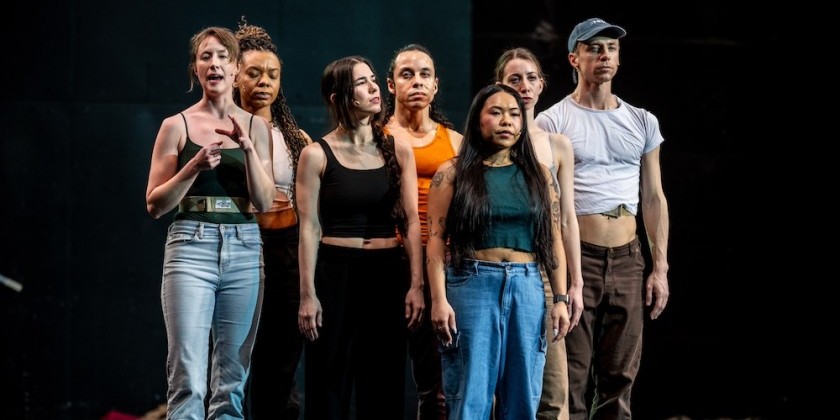
Writer, Director and Choreographer: Raja Feather Kelly
Original Music: Christoph Mateka
Lighting Designer: Tuçe Yasak
Performers: Chris Bell, Ashley Chavonne, Ami Gernux, Alexandria Giroux, Sara Gurevich, Amy Hoang, and Nick Sciscione
Photographer: Kate Enman
Videographer: Laura Snow
Production Assistants: Emma Denson, Neysha Merced
Dates: April 5 - 6, 2024
Raja Feather Kelly's particular fusion of devised theater and dance is at once dense, affecting, and notoriously unpredictable. With “The Absolute Future” (or “Death, Loneliness, and The Absolute Future of the Multiverse, or How to Cover the Sun with Mud”), Kelly bites into, chews up, and spits out a buffet of existential crises framed by an arresting astrological event: the “Great American Eclipse” that cut a dark path through the nation on the afternoon of Monday, April 8th. New Yorkers (myself included) experienced the sun’s subtle dimming in cloud-veiled skies at 90% totality; for four minutes and twenty-eight seconds, millions of bespectacled eyes turned skyward in awe to witness the rare occurrence. Even with everything we know about the motion of celestial bodies, a solar eclipse still holds an air of primordial mystery and mythic power. It reminds us that we are tiny and impermanent, and that we are not alone.
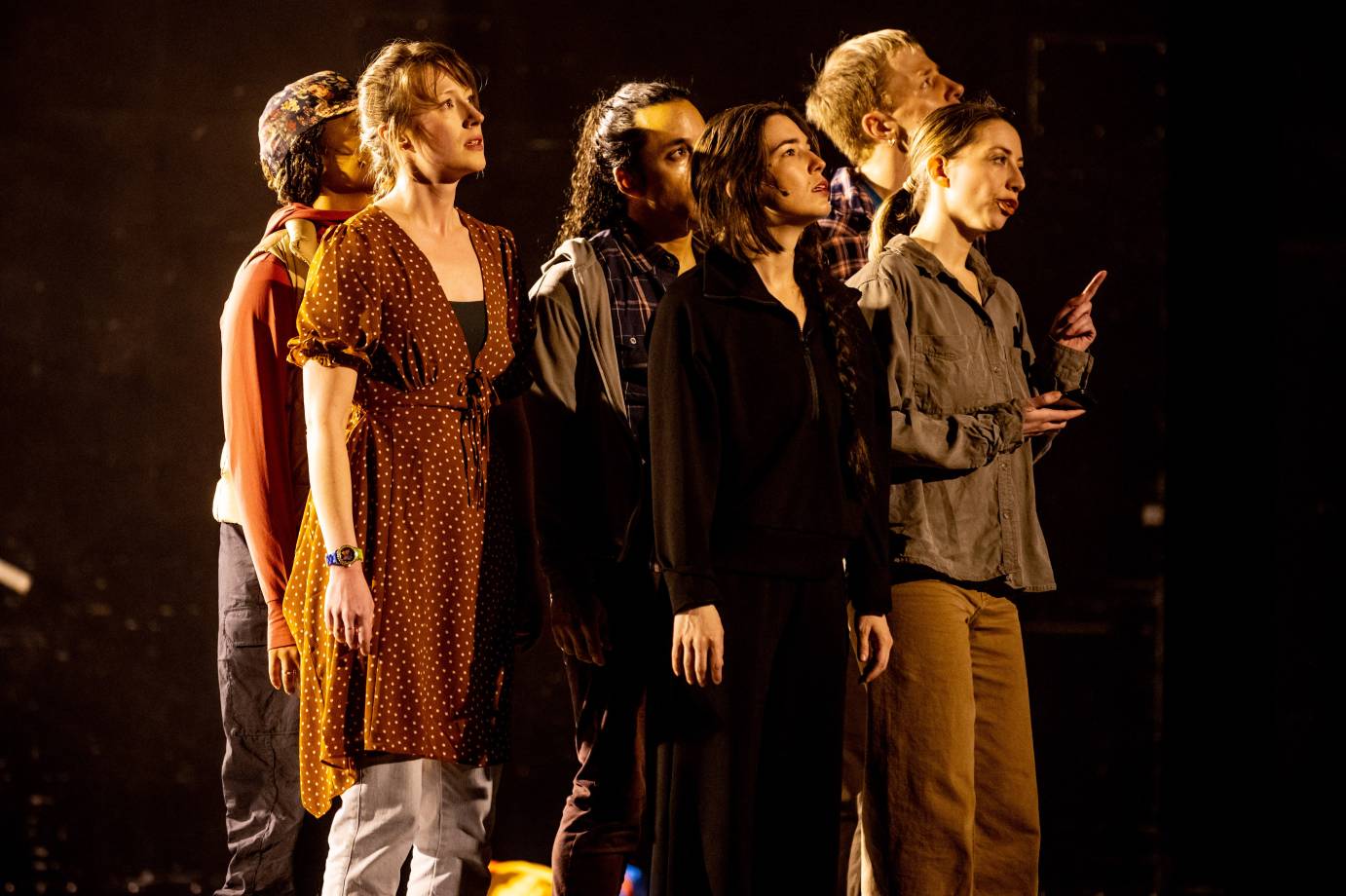
Kelly channels this energy through the voices and bodies of seven excellent performers who deliver his relentless script and multidimensional movement with breathtaking commitment and spontaneity. “The Absolute Future” swings wildly between quiet subtlety and chaotic excess (there’s a lot of screaming) while holding a tenuous thread of narrative anchored in a strong thematic core. The work is a self-conscious reenactment bookended by a short prologue and epilogue in which the performers outline and unpack the events portrayed: a group of seven friends whose conflict-ridden journey to witness the eclipse ends in their somehow missing it entirely. What happens along the way remains unclear to audience and performers alike as pedantic bickering and strange quantum phenomena shatter the group into a confused heap of social wreckage.
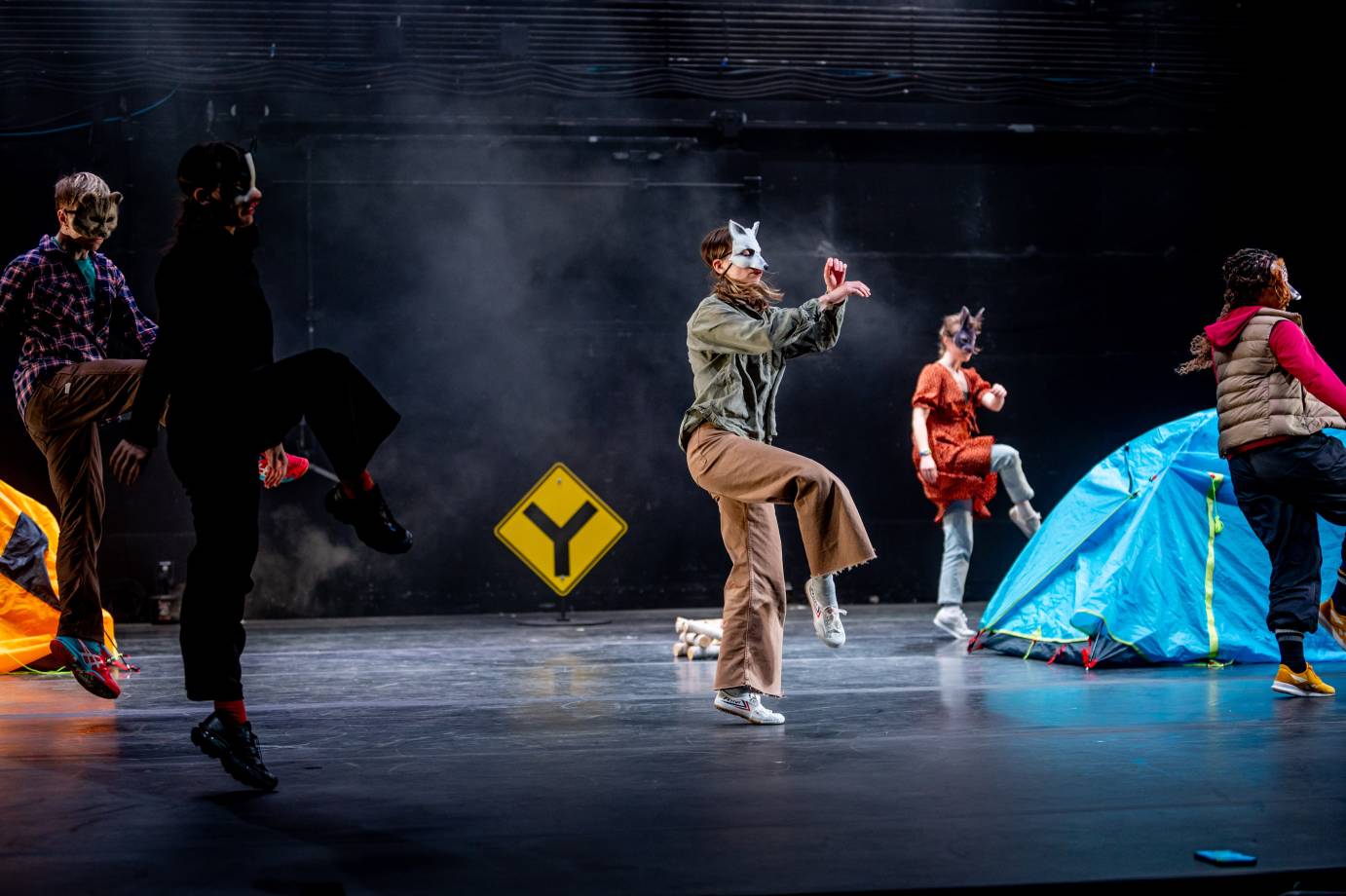
The events play out on a completely unadorned, open stage with the performers in pointedly unremarkable pedestrian clothing. Worldmaking happens through a keen sense of total stagecraft as sound, light, movement, and script cantilever against one another in unexpected and precarious configurations. Tuçe Yasak’s superb lighting steps in as a key driver of narrative, setting, and atmosphere, evoking everything from twinkling stars and a quietly idyllic sunrise to the drama of the eclipse and the dissociation it unleashes upon the group. Color is feeling: a trance in a wash of blue, anxious isolation shot through with wide cones of lurid green or purple light, disorientation in a dark swirling haze of backlit silhouettes (never has a fog machine been quite so effective). The performers’ nearly continuous, splintered stream of chatter bounces against Christoph Mateka’s more-than-ambient original score that is as light and plaintive as it is feral and thrashing. In this milieu bursting with texture and suspense, anything could happen.
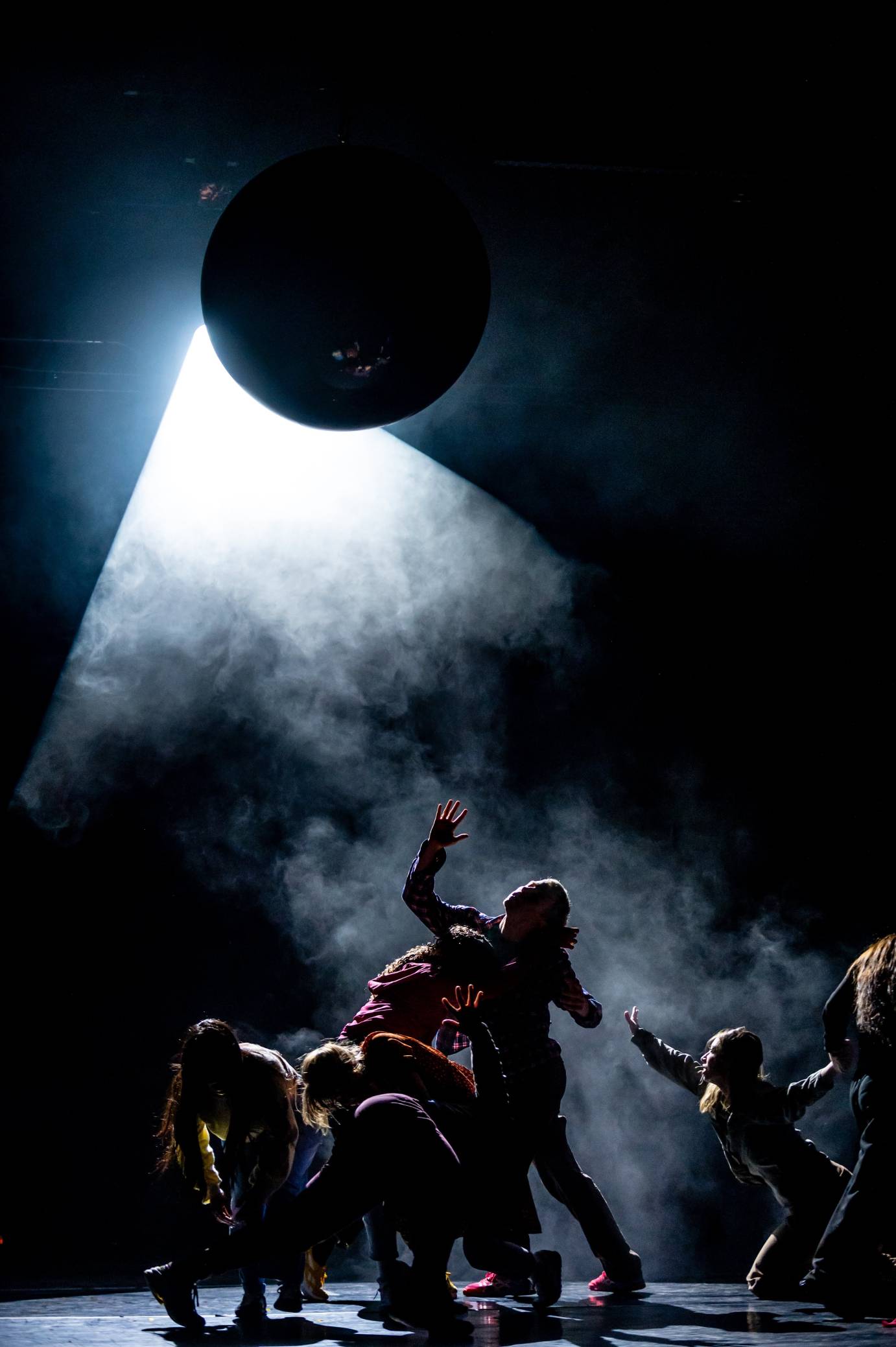
Kelly’s direction and choreography communicate his message with equal measures of clarity and abstraction in words and movement. The performers speak with a pace, tone, and inflection that verge on deadpan, yet are rarely arranged in habitual conversational orientation to one another. Instead, their social frictions, collisions, ruptures, and inexorable isolation are deconstructed to play out in dance. Structured unisons arise and fracture only to recur and fracture yet again to demonstrate the impossibility of the group’s coherence. A motif of shaking—often arising in the hands—pulls insistently on the work’s thread of anxiety and existential dread. Meandering thoughts exit the body in loosely tossed-off swirls and swings; tense pacing evokes unsettled psychologies as frustration gathers to launch limbs and leaps. Danced and spoken monologues draw focus to individuals: Amy Hoang and Ami Gernux stand out with dynamic, full-bodied sensitivity of expression while the power of Nick Sciscione’s voice roots him firmly in place as chaos explodes around him.
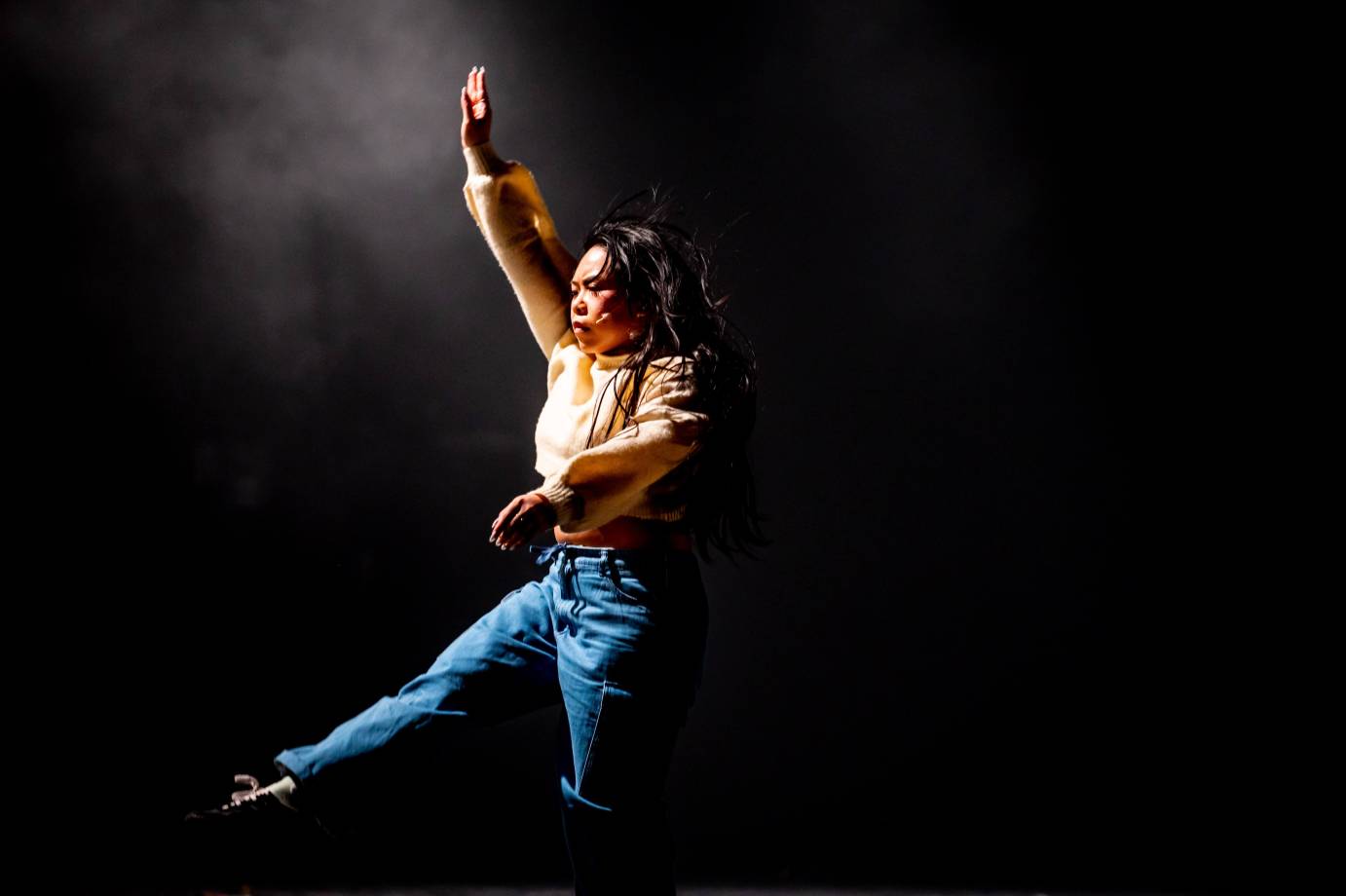
With such lucid movement at play, script turns to soundtrack in an unrelenting cascade of voices that spit short, clipped lines of acerbic verbal sparring. Words allow Kelly to touch explicitly on issues and events that flood the accumulative channel between the individual and the existential: Y2K, 9/11, anthrax, COVID, social media, climate change, the loneliness epidemic, and the eclipse itself. These are generational crises and flashpoints for paradigm shifts in the relationships between self, other, and the collective. Through these events Kelly probes questions on two sides of the same coin: what brings us together and what tears us apart. Beauty, terror, and vulnerability vibrate from every atom of this urgently expressive reckoning, only to settle gently in its totality: total eclipse, total attention, total love.













